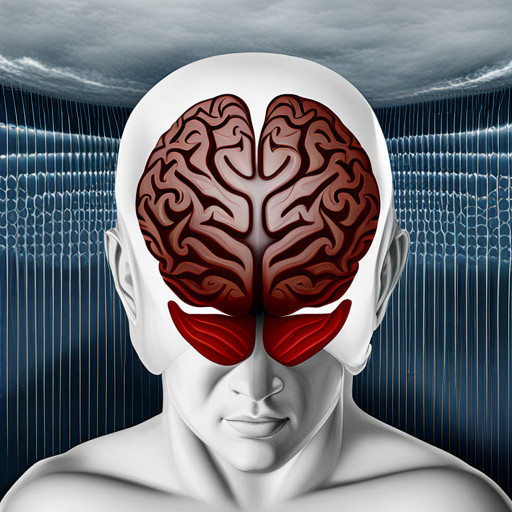Brain Injuries in Sports and Recreation: Alarming Data
This article examines the prevalence of nonfatal Traumatic Brain Injuries (TBIs) in sports and recreation, based on data from U.S. hospital emergency departments. It discusses the demographic trends, activities with the highest injury rates, and hospitalization data. The limitations of current data collection methods and the potential underrepresentation of TBIs are also addressed. The article emphasizes the need for improved awareness, prevention strategies, and management of TBIs to prevent long-term health impacts.

Key Takeaways
- Nonfatal traumatic brain injuries (TBIs) from sports and recreation activities are prevalent, with an estimated 207,830 patients treated in U.S. hospital emergency departments each year.
- Males account for approximately 70.5% of TBIs from sports and recreation activities.
- The highest rates of TBIs occur among those aged 10-14 years, and activities such as bicycling, football, playground activities, basketball, and riding all-terrain vehicles (ATVs) are associated with the greatest number of TBI-related emergency department visits.
- TBIs can have long-term negative health effects, including memory loss, behavioral changes, and cognitive problems. Increased awareness of TBI risks and prevention strategies is crucial in reducing the incidence and severity of TBIs.
Understanding Nonfatal Traumatic Brain Injuries in Sports
In the context of sports and recreation, understanding nonfatal traumatic brain injuries is crucial, given that approximately 207,830 patients were treated for such injuries in U.S. emergency departments annually from 2001-2005, according to data from the National Electronic Injury Surveillance System-All Injury Program. Understanding patterns and causes of these injuries is key to developing effective prevention strategies. Activities with the highest rates of injury include bicycling, football, and playground activities. The impact of these injuries on cognitive function and long-term health outcomes is significant, often resulting in memory loss and behavioral changes. A comprehensive analysis of these injuries and their implications is essential for minimizing their occurrence and mitigating their effects, thereby ensuring safer participation in sports and recreational activities.
Demographics of Sports-Related Brain Injuries
While the prevalence of sports-related brain injuries is a concerning issue, it is equally alarming to observe that males, particularly those in the 10 to 14 age bracket, account for approximately 70.5% of emergency department visits for such injuries. The risk factors for sports-related brain injuries are numerous, encompassing a wide range of activities such as bicycling, football, and basketball. An analysis of gender differences in sports-related brain injuries shows that males are disproportionately affected. This may be related to their increased participation in high-risk sports. The data underscores the need for comprehensive preventative strategies, tailored towards high-risk groups and activities. These should include education on the dangers of such injuries, coupled with the promotion of protective measures, such as wearing helmets.
The Role of Age in Sports-Related Brain Injuries
We must consider the role of age in sports-related brain injuries, as research has shown that certain age groups, particularly children aged 10-14 years, are at a higher risk for these types of injuries. The influence of age on the severity of sports-related brain injuries is significant. Younger athletes, due to their developing brains and lack of experience, are more prone to dangerous maneuvers, leading to a higher incidence of injuries. Factors contributing to this higher incidence include insufficient protective gear, lack of skill development, and inadequate supervision. Moreover, the younger the athlete, the longer the recovery process tends to be, implying age's influence extends to post-injury recovery. Therefore, implementing protective measures and providing proper training for young athletes becomes crucial to mitigate this risk.
Activities With the Highest Number of Brain Injuries
Frequently, bicycling and football result in the highest number of brain injuries, and playground activities, basketball, and ATV riding are also significantly associated with these injuries. The prevalence of brain injuries in contact sports is alarming, pointing to the necessity for more robust preventive measures and safety protocols. Research reveals that males and individuals aged 10-14 years are disproportionately affected by sports-related traumatic brain injuries (TBIs). These injuries significantly impact athletes' careers, often necessitating extended periods of recovery and, in severe cases, leading to premature retirement. Even mild TBIs can cause cognitive difficulties that can affect performance and the ability to compete. Therefore, it is critical to prioritize athlete safety to mitigate the frequency and severity of TBIs in sports.
Hospitalization Rates for Sports-Related Brain Injuries
Surprisingly, approximately 10.3% of patients with sports-related traumatic brain injuries require hospitalization or transfer for additional care, underscoring the severity of these types of injuries. This data emphasizes the need for understanding the causes, prevention, and treatment of sports related brain injuries. Activities linked to the highest hospitalization rates include ATV riding, moped or dirt bike riding, and bicycling. The effectiveness of current concussion protocols in sports is a crucial aspect of this discussion. While these protocols have certainly evolved, their implementation and adherence are not universal across all sports and levels of play. Evaluating the effectiveness of these protocols and enhancing them where necessary can significantly reduce the number of serious injuries, reduce hospitalization rates, and improve the overall safety of sports participation.
Examining Transfer Rates for Sports-Related Brain Injuries
Alarmingly, around 10.3% of patients with sports-related traumatic brain injuries not only require immediate hospitalization, but also necessitate transfer for advanced care, highlighting the critical nature of these incidents. Understanding the impact of these injuries is essential in promoting effective prevention strategies. The data derived from the National Electronic Injury Surveillance System-All Injury Program (NEISS-AIP) provides valuable insight into the severity of these injuries, but the true burden may be underrepresented. Activities like ATV riding, bicycling, and football have shown to result in a high proportion of injuries needing advanced care. Current prevention strategies need to be refined, taking into account these data while bolstering education on potential risks and safety measures in these high-risk activities. This can potentially reduce the incidence of such severe injuries.
Long-Term Health Impact of Traumatic Brain Injuries
In the context of traumatic brain injuries (TBIs), it is vital to consider the long-term health impact, which can include persistent cognitive, physical, and emotional challenges. TBIs, even those deemed mild, can lead to enduring effects like memory loss, behavioral changes, and impaired cognitive functions. These long-term effects can significantly impede an individual's return to normalcy, affecting their academic or professional performance. Repeated or severe TBIs exacerbate these consequences, potentially manifesting as chronic physical or emotional issues. It is therefore crucial to bolster efforts in TBI prevention strategies and early identification. Increased awareness of TBI risks, alongside timely management, can play a significant role in mitigating both the incidence and severity of these long-term effects.
The Potential Cognitive Consequences of Brain Injuries
How significantly can brain injuries impact cognitive functions, and what measures can be implemented to mitigate these potential consequences? Research reveals that brain injuries can dramatically influence cognitive abilities, manifesting in changes in memory, attention, and information processing speed. This impact on cognitive functions can have a severe effect on academic performance, as it often challenges learning, comprehension and application skills. Potential treatment options include cognitive rehabilitation therapy, pharmacotherapy, and lifestyle modifications. Cognitive rehabilitation therapy seeks to improve cognitive skills and compensate for cognitive deficits. Pharmacotherapy involves the use of medications to alleviate symptoms, while lifestyle modifications include strategies such as regular physical activity and a healthy diet. These interventions have shown promise, but further research is essential to validate their effectiveness in mitigating the cognitive consequences of brain injuries.
Data Sources for Brain Injury Statistics
The National Electronic Injury Surveillance System-All Injury Program's database offers a comprehensive collection of brain injury statistics. This database is instrumental in understanding brain injury prevention strategies and identifying risk factors for sports-related brain injuries. The data suggests a high prevalence of traumatic brain injuries (TBIs) among sports participants, especially those engaged in activities like football, basketball, and bicycling. Male athletes and children aged 10-14 years were found to be particularly susceptible. The findings underline the urgent need for effective prevention strategies, timely identification, and management of TBIs. While the database provides valuable insights, it represents only a portion of all TBIs, highlighting the need for additional data sources and research for a more comprehensive understanding of the issue.
Methodology for Collecting Brain Injury Data
Both the quantity and quality of data collected are crucial in creating an accurate picture of brain injuries, and the specific methodology employed significantly impacts these factors. The National Electronic Injury Surveillance System-All Injury Program (NEISS-AIP) is a valuable source, yet it has its limitations. Primarily, it underrepresents the true burden of sport and recreation-related traumatic brain injuries (TBIs), as it only includes cases treated in emergency departments. To improve data collection methods, we need to integrate other injury-classification systems like the International Classification of Diseases. A multi-dimensional approach would offer a more comprehensive understanding of TBIs, including those not treated by a healthcare provider, thereby aiding in the development of effective prevention and management strategies.
Limitations of Current Brain Injury Data
Existing brain injury data, while valuable, has notable limitations, including underrepresentation of sport and recreation-related traumatic brain injuries and exclusion of cases not treated in emergency departments. Current data does not adequately encompass the potential long-term effects of these injuries, such as cognitive impairment, behavioural changes, and limitations in daily activities. Furthermore, it lacks comprehensive evidence on effective prevention strategies across diverse sports and recreation activities. The exclusion of untreated cases further compounds these limitations, potentially leading to an underestimate of the true burden of these injuries. As such, there is a pressing need for improved data collection methodologies and research to fully understand this public health issue and develop effective prevention strategies.
The True Burden of Sports-Related Brain Injuries
Despite advances in medical technology and protective equipment, sports-related brain injuries still present a significant health concern, and our understanding of their long-term impact remains incomplete. The underreporting of sports-related brain injuries exacerbates this issue, with data from the National Electronic Injury Surveillance System-All Injury Program likely representing just the tip of the iceberg. Studies estimate 1.6 to 3.8 million such injuries occur annually, many of which never reach medical providers. The impact of these injuries on quality of life is significant, affecting cognitive function, emotional health, and professional and academic performance. To address this, we need more comprehensive reporting mechanisms and a greater emphasis on preventive measures, timely identification, and effective management of these injuries.
The Importance of Effective Management and Prevention Strategies for Brain Injuries
Effective management of brain injuries is crucial for minimizing long-term cognitive and physical impacts, and prevention strategies, such as improved safety equipment and education, are vital in reducing the frequency and severity of such injuries. The data from the National Electronic Injury Surveillance System-All Injury Program suggests an alarming rate of sports and recreation-related traumatic brain injuries (TBIs), particularly among males and those aged 10-14 years. Effective prevention strategies should therefore cater to these high-risk groups, focusing on activities such as bicycling, football, and playground activities. Moreover, managing brain injuries promptly and efficiently is critical to prevent long-term health effects like memory loss and behavioral changes. Thus, a comprehensive approach encompassing both prevention and management is paramount in addressing the issue of brain injuries.
Frequently Asked Questions
What Are Some Common Symptoms of a Traumatic Brain Injury That Individuals Should Be Aware Of?
Common symptoms of a traumatic brain injury (TBI) include headaches, dizziness, confusion, and memory issues. Diagnosis challenges often arise due to the variability in symptom presentation. Hence, accurate assessment is crucial for effective treatment. Treatment options for TBI range from rest and medication to surgery, depending on the severity. Cognitive and physical therapy may also be necessary. Prompt recognition and treatment of TBI symptoms can significantly improve recovery outcomes.
Are There Specific Sports That Carry a Higher Risk of Traumatic Brain Injuries Than Others?
According to injury statistics, certain sports carry a higher risk of traumatic brain injuries (TBIs). Activities such as bicycling, football, basketball, and all-terrain vehicle riding have been associated with a significant number of TBI-related emergency department visits. The use of appropriate protective equipment can mitigate some of these risks, although it cannot completely eliminate them. Therefore, understanding the specific risks associated with each sport is crucial for effective injury prevention.
What Are Some Prevention Strategies That Can Be Implemented to Reduce the Likelihood of Sports-Related Traumatic Brain Injuries?
Prevention strategies for sports-related traumatic brain injuries include the implementation of improved helmet innovations and strict adherence to concussion protocols. Helmet innovations aim to provide superior protection, reducing the impact forces to the brain. Concussion protocols, including immediate removal from play and appropriate medical assessments, can help manage injuries effectively and prevent further damage. These strategies, when combined with education and policy changes, can significantly reduce the risk of such injuries.
How Does the Severity of a Traumatic Brain Injury Impact the Long-Term Health Outcomes for an Individual?
The severity of a traumatic brain injury (TBI) can significantly impact long-term health outcomes. Severe TBIs often require extensive neurological rehabilitation, with varying degrees of success. Even mild TBIs can result in long-term cognitive or behavioral changes, affecting daily life and work productivity. The prognosis following a TBI is highly individual and depends on the severity of the injury, early intervention, and ongoing care. Thus, it is crucial to prevent TBIs and manage them effectively when they occur.
Can a Person Fully Recover From a Sports-Related Traumatic Brain Injury, or Are There Always Lasting Effects?
Recovery from a sports-related traumatic brain injury (TBI) varies greatly, depending on injury severity, individual health, and rehabilitation techniques employed. While some people may regain most functions, others could experience lasting effects such as cognitive impairment or behavioral changes. Therefore, post-injury lifestyle changes, including ongoing therapy and adaptive strategies, are often necessary. However, comprehensive and personalized rehabilitation can significantly improve outcomes and quality of life post-TBI.
Conclusion
The alarming rate of nonfatal TBIs in sports necessitates improved surveillance methods to accurately capture data, augmenting our understanding of the true prevalence. Effective prevention strategies, timely identification, and proper management are essential in mitigating adverse health effects. With males and age groups 10-14 years disproportionately affected and certain activities posing greater risks, targeted interventions could greatly reduce the incidence and severity of sports-related TBIs, thereby enhancing safety in sports and recreational activities.

This post has been generated by AI and was not reviewed by editors. This is Not legal advice. Please consult with an attorney.




